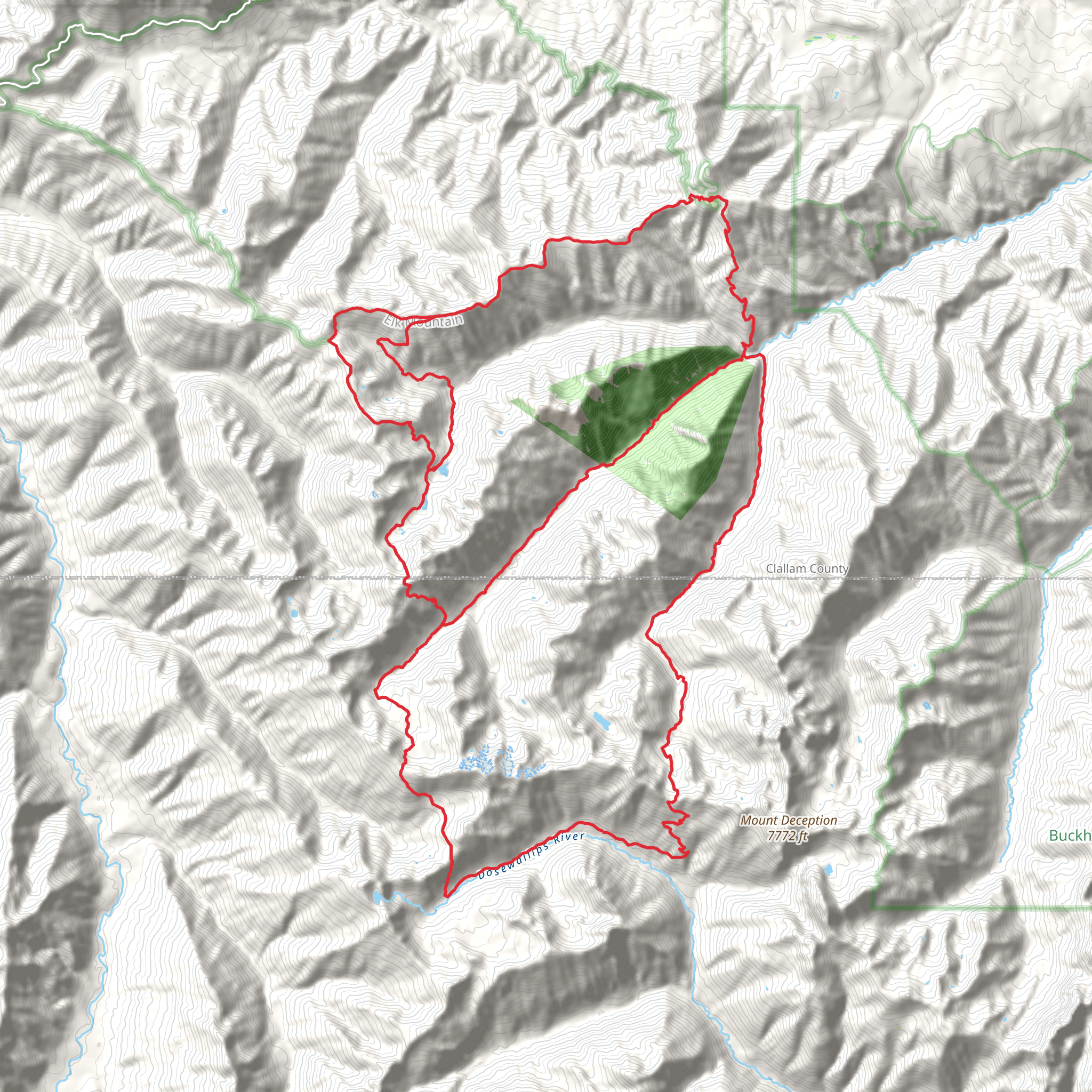Download
Preview
Add to list
More
66.7 km
~5 days
3727 m
Multi-Day
“Trek the Northeastern Olympics Loop: a majestic yet demanding journey through Washington's wild heart.”
Embarking on the Northeastern Olympics Loop is a journey through the heart of the Olympic Mountains, offering a challenging and immersive experience in one of Washington's most pristine wilderness areas. This approximately 67 km (41.6 miles) loop, with an elevation gain of around 3700 meters (12,139 feet), is not for the faint of heart and is best suited for seasoned hikers who are well-prepared for backcountry travel.Getting to the TrailheadThe trailhead is accessible near Clallam County, Washington. If you're driving, you can reach the starting point by taking US Highway 101 to the relevant exit for the Olympic National Park. For those relying on public transportation, there are bus services that run from Seattle to Port Angeles, and from there, you can catch a shuttle or taxi to the trailhead. Ensure you check the latest schedules and availability, as services may vary seasonally.Navigating the TrailAs you set out on your adventure, it's crucial to have a reliable navigation tool. HiiKER is an excellent resource for trail maps and navigation, helping you stay on track throughout your hike. The loop is well-marked in most places, but weather conditions can obscure the path, so electronic navigation aids are highly recommended.Landmarks and Natural FeaturesThe trail will take you through a diverse range of landscapes, including deep old-growth forests, alpine meadows, and rugged mountain passes. Early in the hike, you'll encounter the serene Lake Angeles, nestled about 6.4 km (4 miles) from the trailhead. This is a perfect spot to rest and take in the tranquility of the surroundings.As you ascend further, you'll reach the Klahhane Ridge, offering panoramic views of the surrounding peaks and valleys. The ridge is a highlight for many, sitting roughly at the 16 km (10 miles) mark, with an elevation gain of about 1100 meters (3608 feet).Wildlife and FloraThe Olympic Mountains are home to a rich array of wildlife, including black bears, mountain goats, and the elusive Olympic marmot. Birdwatchers will be delighted by the variety of avian species, from the majestic bald eagle to the tiny pika. The flora is equally impressive, with wildflowers like lupines and Indian paintbrush adding splashes of color to the landscape in the warmer months.Historical SignificanceThe region holds significant historical value, with the Olympic Mountains being a sacred place for the indigenous peoples of the area, including the Klallam and Quileute tribes. The mountains have served as a source of spiritual inspiration and sustenance for thousands of years.Preparation and SafetyGiven the trail's difficulty rating of Extra Difficult, it's essential to be well-prepared. This means bringing appropriate gear for all weather conditions, as the Olympics are known for unpredictable weather. It's also wise to pack enough food and water for the entire trek, as resupply points are non-existent.Always inform someone of your itinerary and expected return time. Given the remote nature of the trail, it's crucial to be self-sufficient and prepared for emergencies. A first aid kit, emergency shelter, and the means to purify water are must-haves.ConclusionIn conclusion, the Northeastern Olympics Loop is a challenging yet rewarding experience for the well-prepared hiker. With its stunning vistas, diverse ecosystems, and rich cultural history, it's a journey that offers more than just physical exertion—it's an opportunity to connect deeply with the natural world.
What to expect?
Activity types
Comments and Reviews
User comments, reviews and discussions about the Northeastern Olympics Loop, Washington.
4.8
average rating out of 5
10 rating(s)

